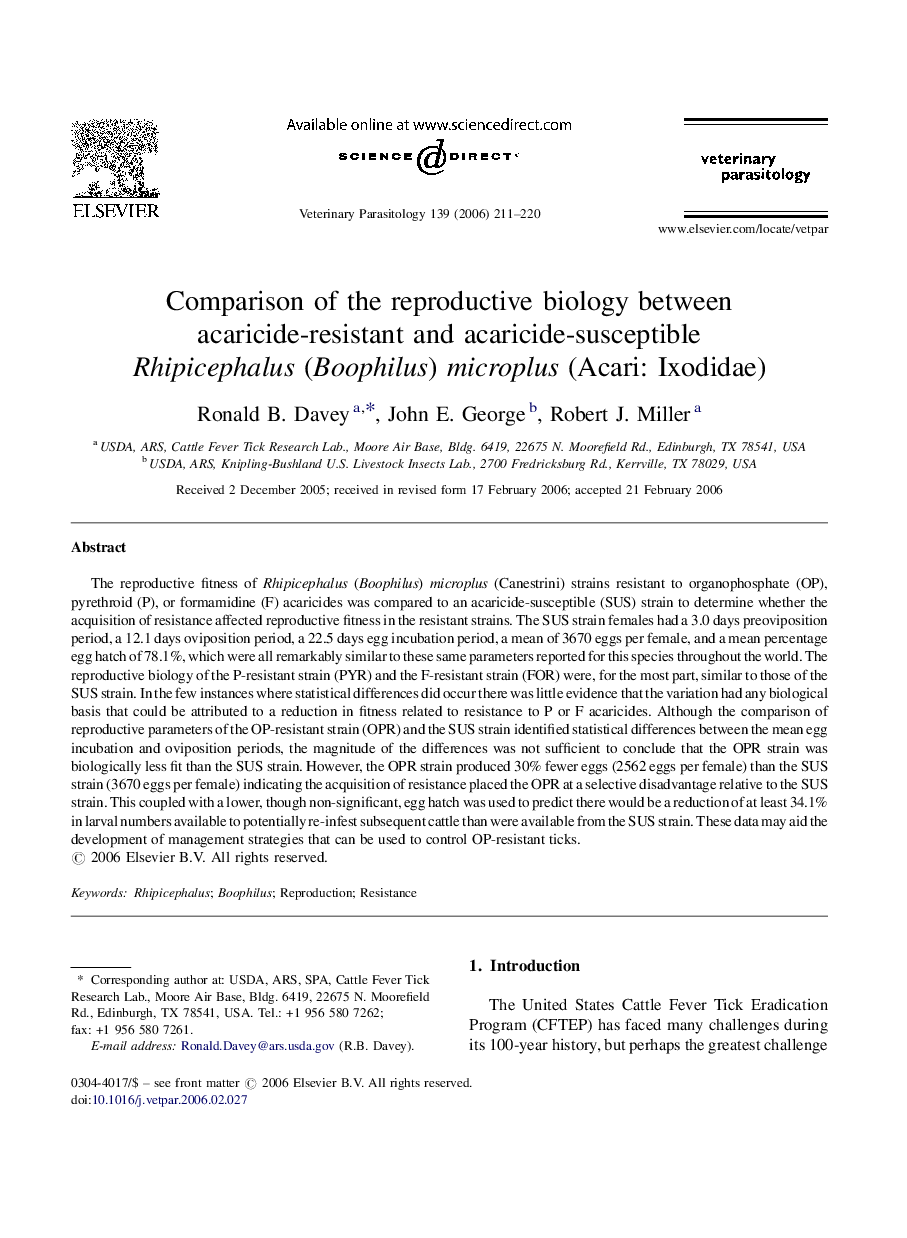| کد مقاله | کد نشریه | سال انتشار | مقاله انگلیسی | نسخه تمام متن |
|---|---|---|---|---|
| 2472494 | 1555794 | 2006 | 10 صفحه PDF | دانلود رایگان |

The reproductive fitness of Rhipicephalus (Boophilus) microplus (Canestrini) strains resistant to organophosphate (OP), pyrethroid (P), or formamidine (F) acaricides was compared to an acaricide-susceptible (SUS) strain to determine whether the acquisition of resistance affected reproductive fitness in the resistant strains. The SUS strain females had a 3.0 days preoviposition period, a 12.1 days oviposition period, a 22.5 days egg incubation period, a mean of 3670 eggs per female, and a mean percentage egg hatch of 78.1%, which were all remarkably similar to these same parameters reported for this species throughout the world. The reproductive biology of the P-resistant strain (PYR) and the F-resistant strain (FOR) were, for the most part, similar to those of the SUS strain. In the few instances where statistical differences did occur there was little evidence that the variation had any biological basis that could be attributed to a reduction in fitness related to resistance to P or F acaricides. Although the comparison of reproductive parameters of the OP-resistant strain (OPR) and the SUS strain identified statistical differences between the mean egg incubation and oviposition periods, the magnitude of the differences was not sufficient to conclude that the OPR strain was biologically less fit than the SUS strain. However, the OPR strain produced 30% fewer eggs (2562 eggs per female) than the SUS strain (3670 eggs per female) indicating the acquisition of resistance placed the OPR at a selective disadvantage relative to the SUS strain. This coupled with a lower, though non-significant, egg hatch was used to predict there would be a reduction of at least 34.1% in larval numbers available to potentially re-infest subsequent cattle than were available from the SUS strain. These data may aid the development of management strategies that can be used to control OP-resistant ticks.
Journal: Veterinary Parasitology - Volume 139, Issues 1–3, 30 June 2006, Pages 211–220